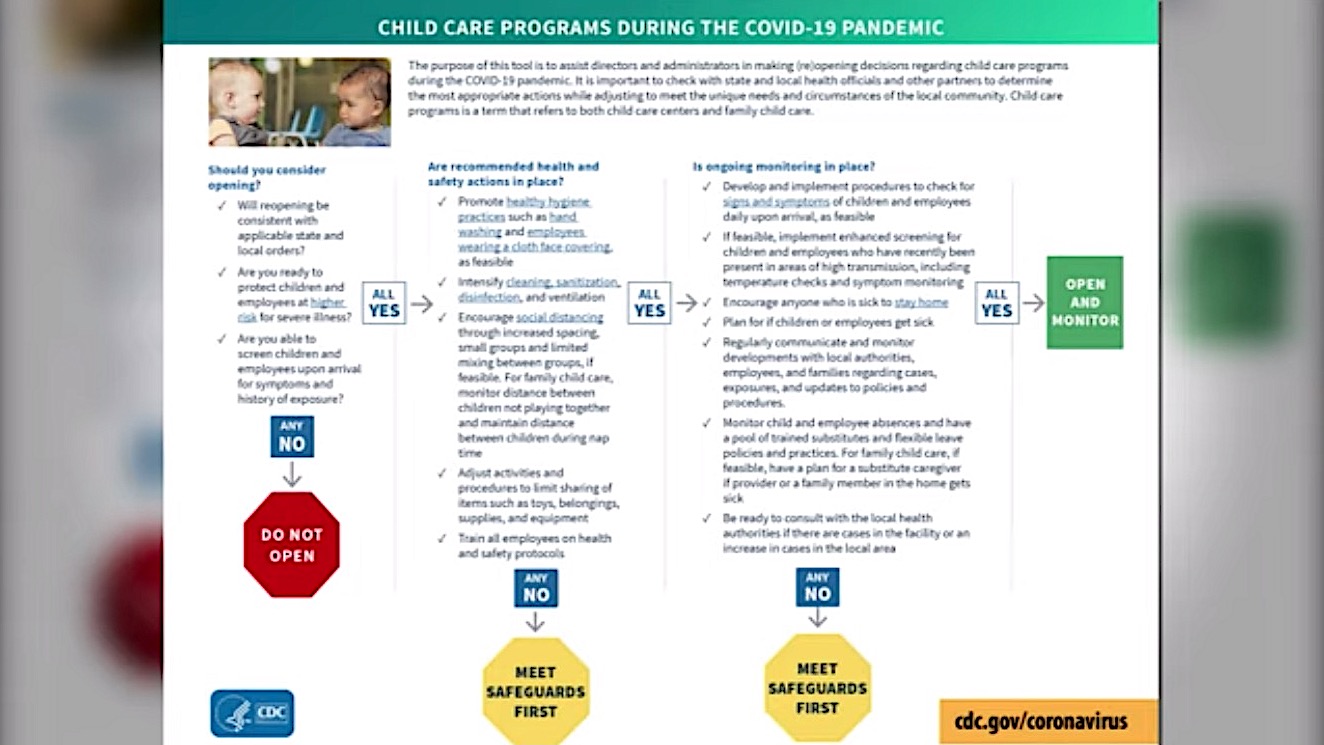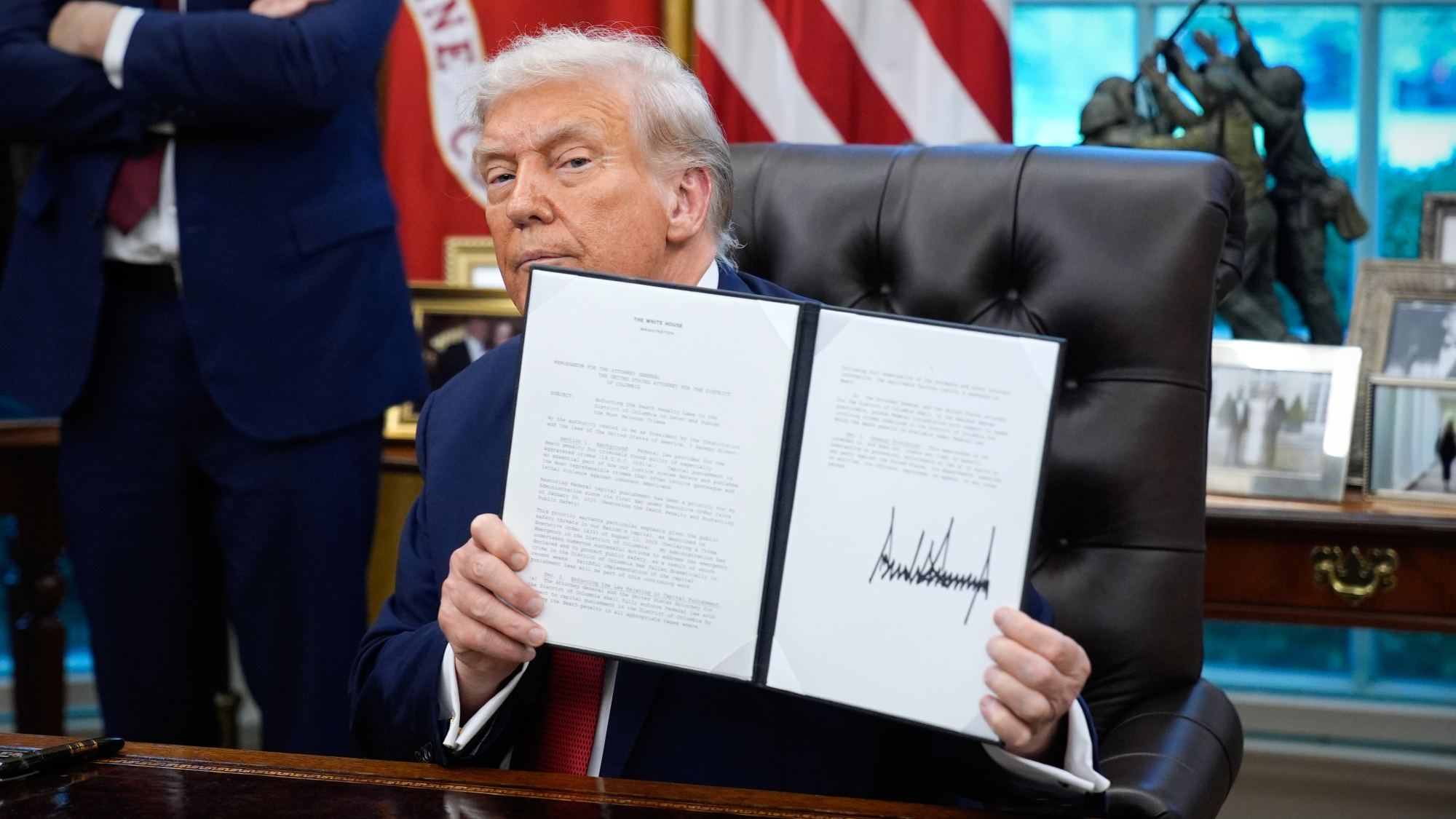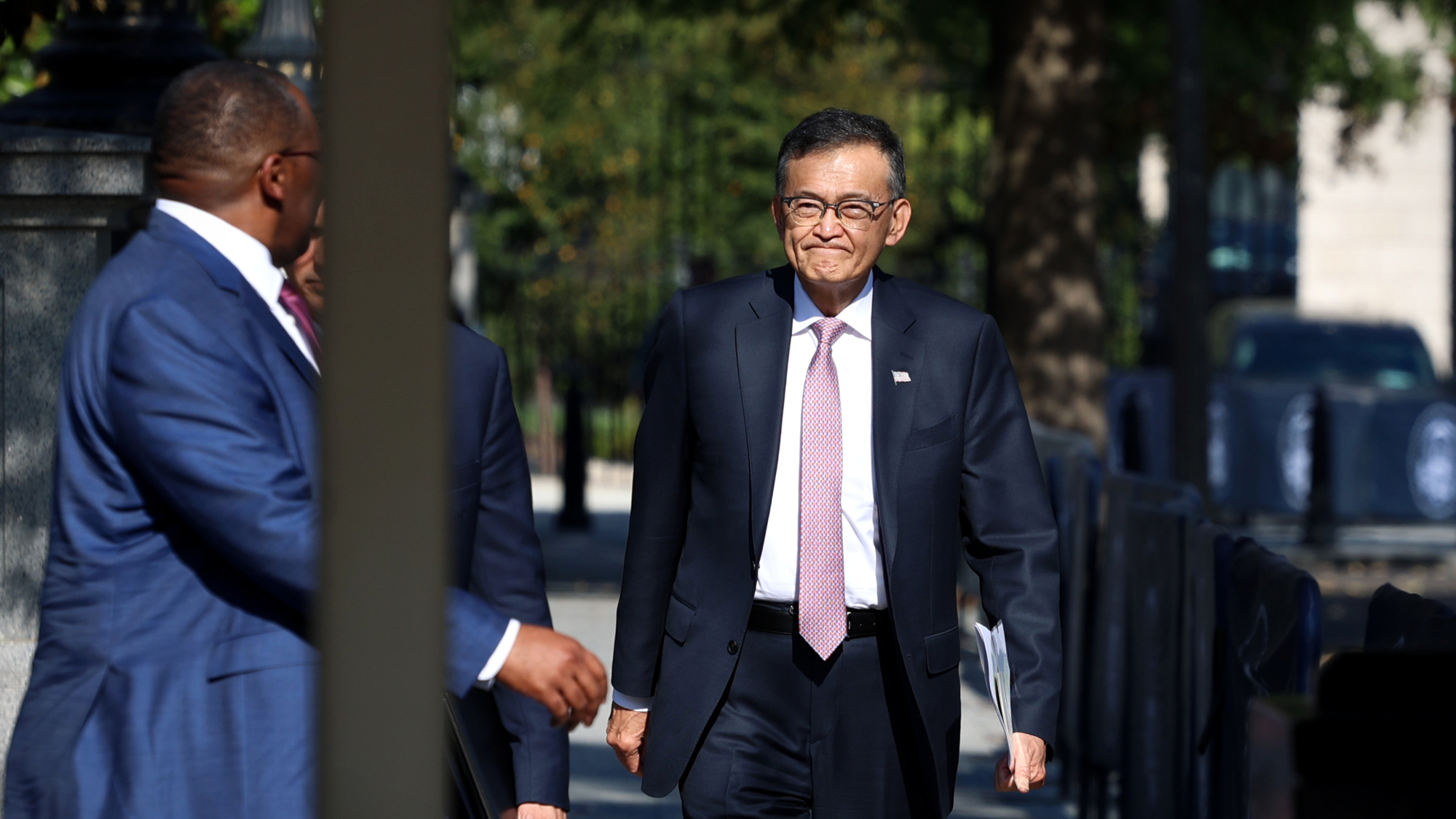CDC publishes pared-down sections from reopening guidance shelved by the White House


The Centers for Disease Control and Prevention published six one-page "decision tool" documents Thursday afternoon for schools, camps, businesses, and other institutions to use when deciding whether or how to reopen during the COVID-19 pandemic. These are the only publicly released remnants of what was originally about 57 pages of detailed guidance from CDC scientists, whittled down to 17 pages and cleared by CDC leaders for release by President Trump's May 1 reopening target date before the White House shelved the document.
The published decision trees were edited by White House officials in the Office of Management and Budget, typically to add more wiggle room. They provide checklists for schools, camps, restaurants, bars, mass transit systems, childcare centers, and workplaces. Churches are on their own. "The CDC originally also authored a document for churches and other religious facilities, but that wasn't posted Thursday," The Associated Press reports. "The agency declined to say why," but government emails and interviews with Trump administration officials show the White House did not want the government making specific dictates to place of worship.

A CDC spokesman told The Washington Post that the agency may still released additional recommendations, but "this was an effort on our part to make some decision trees we thought might be helpful to those moving forward with opening their establishment," while other guidance went through the White House review process.
The Week
Escape your echo chamber. Get the facts behind the news, plus analysis from multiple perspectives.

Sign up for The Week's Free Newsletters
From our morning news briefing to a weekly Good News Newsletter, get the best of The Week delivered directly to your inbox.
From our morning news briefing to a weekly Good News Newsletter, get the best of The Week delivered directly to your inbox.
Top White House officials killed the 17-page detailed guidelines on April 30 with little explanation, AP reports, citing internal government emails. On Thursday, May 7, though, AP reported that the Trump administration had buried the guidance, and "after the story ran, the White House called the CDC and ordered them to refile all of the decision trees, except one that targeted churches," AP reports. "An email obtained by the AP confirmed the agency resent the documents late Thursday, hours after news broke." You can read the original document via The Associated Press.
A free daily email with the biggest news stories of the day – and the best features from TheWeek.com
Peter has worked as a news and culture writer and editor at The Week since the site's launch in 2008. He covers politics, world affairs, religion and cultural currents. His journalism career began as a copy editor at a financial newswire and has included editorial positions at The New York Times Magazine, Facts on File, and Oregon State University.
-
 TikTok secures deal to remain in US
TikTok secures deal to remain in USSpeed Read ByteDance will form a US version of the popular video-sharing platform
-
 Unemployment rate ticks up amid fall job losses
Unemployment rate ticks up amid fall job lossesSpeed Read Data released by the Commerce Department indicates ‘one of the weakest American labor markets in years’
-
 US mints final penny after 232-year run
US mints final penny after 232-year runSpeed Read Production of the one-cent coin has ended
-
 Warner Bros. explores sale amid Paramount bids
Warner Bros. explores sale amid Paramount bidsSpeed Read The media giant, home to HBO and DC Studios, has received interest from multiple buying parties
-
 Gold tops $4K per ounce, signaling financial unease
Gold tops $4K per ounce, signaling financial uneaseSpeed Read Investors are worried about President Donald Trump’s trade war
-
 Electronic Arts to go private in record $55B deal
Electronic Arts to go private in record $55B dealspeed read The video game giant is behind ‘The Sims’ and ‘Madden NFL’
-
 New York court tosses Trump's $500M fraud fine
New York court tosses Trump's $500M fraud fineSpeed Read A divided appeals court threw out a hefty penalty against President Trump for fraudulently inflating his wealth
-
 Trump said to seek government stake in Intel
Trump said to seek government stake in IntelSpeed Read The president and Intel CEO Lip-Bu Tan reportedly discussed the proposal at a recent meeting



